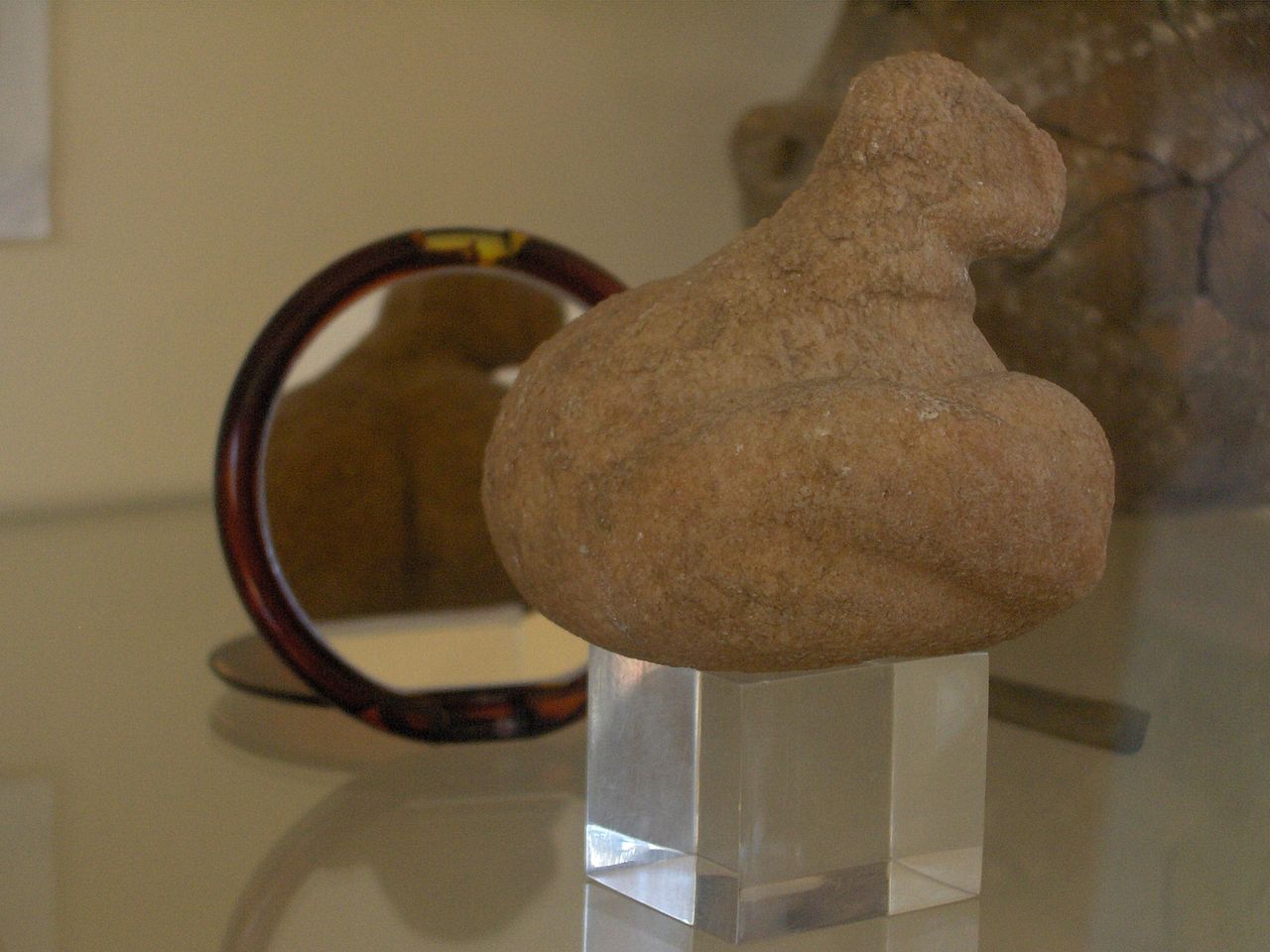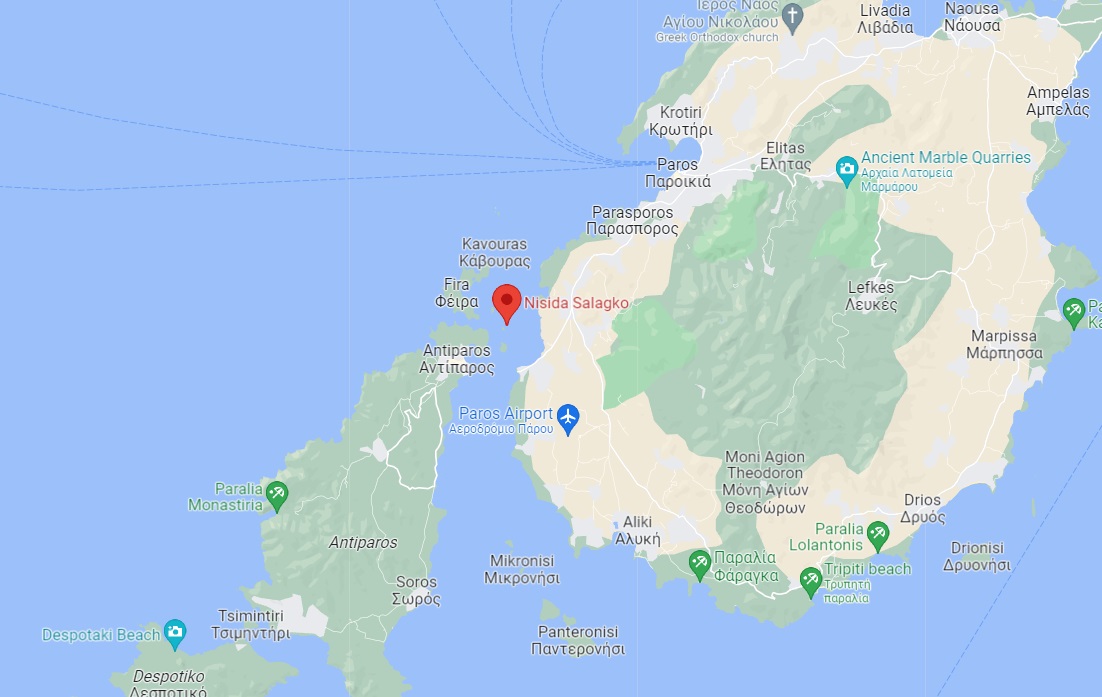
The Fat Lady of Saliagos (also known as The Naked Lady of Saliagos) is the oldest known Cycladic sculpture.
It is a marble figure from the Aegean Neolithic period discovered on the tiny islet of Saliagos between the Greek islands of Paros and Antiparos.
The figure dates from about 5000 to 4000 BC and is the oldest known Cycladic sculpture. The figure is missing its head and left shoulder.
It was found during the excavations of Saliagos in the 1960s and it currently resides in the Archaeological Museum of Paros.
The oldest known Cycladic sculpture and her home on Saliagos
Just 500 meters to the north of Antiparos lies Saliagos, an islet of inestimable historical value and natural beauty.
The islet has a length of 100 metres (from north to south) and a width of 50 metres (east to west). During the Neolithic Period, the level of the sea was at least six metres lower than today, and Saliagos was a peninsula on the isthmus that linked Antiparos to its bigger brother Paros.

Known to history lovers the world over owing to the archaeological findings made there, this islet was home to the oldest known settlement in the Cyclades, some 5,300 years ago.
According to archaeologists, humankind started settling in the Cycladic islands at the beginning of the Late Neolithic Period, on the islet of Saliagos, which lies 500 metres from Antiparos.
The settlement of Saliagos, traces of which were first located in 1961 by Nikolaos Zafeiropoulos, superintendent of antiquities, and brought to light by British archaeologists John Evans and Colin Renfrew in 1964, covers the entire islet and dates to at least the end of the 5th millennium BC approximately.
It was composed of rectangular dwellings with stone foundations, which were surrounded by a wall. The task of constructing a defensive wall demands a coordinated collective effort, a fact that proves that in the Cyclades they had already begun the process that would lead later—during the Early Bronze Age—to the foundation of cities.
The inhabitants of the settlement constructed their tools and arrowheads from obsidian. It seems, in fact, that the processing of obsidian took place to a much greater extent than that which local needs could account for; this indicates that the settlement of Saliagos constituted a centre for the processing of and trade in obsidian from Milos.
Its inhabitants were also involved in fishing, livestock-raising, the cultivation of cereals, pottery-making and basket-weaving.
Spoons made out of mussels, several hoes and tools made out of bones, vases and figurines have also been found on the islet.
Most of the vases unearthed in Saliagos resemble fruit bowls. They are made of dark clay and have a white linear decoration, are open, with an outline that is straight, curved or angled, and have a flat base or, more often, a tall support.
No sites of the so-called ‘Saliagos Civilization’ have survived. Very few facts are known about both the society and the religious convictions of these people, as well as about their origin.
See all the latest news from Greece and the world at Greekreporter.com. Contact our newsroom to report an update or send your story, photos and videos. Follow GR on Google News and subscribe here to our daily email!



